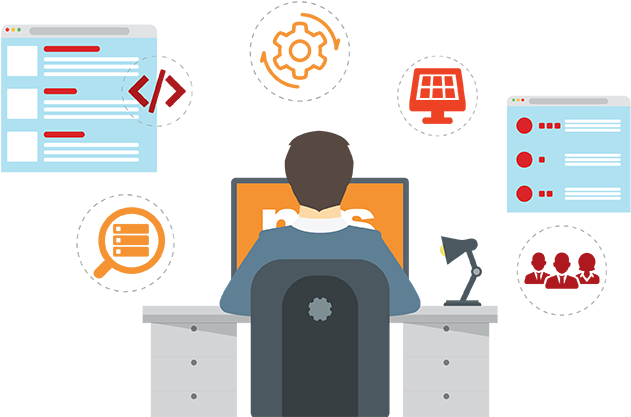Indian classical music is like a beautiful gift to humanity. It's a kind of music that born from Indian lands and has the incredible power to soothe our souls and to remind our humanity. Since I was in school, I've been passionate about two things: technology and Indian classical music. Recently, I started wondering, "How Indian Classical Music can be involved in Software Engineering?" This article is my attempt to explore this interesting question. And This is my first-person idea about that with my experience.
What is Indian classical music?
Indian classical music, also known as Eastern music, flows like a lifeblood through the veins of its people. It is a musical tradition deeply rooted in the rich soil of their culture. This art form, I discovered, Indian classical music is a composition of ragas and Taala, where ragas are crafted from an intricate array of musical notes known as "Swara," and Taala is all about the rhythm and timing. I've personally experienced the mathematical side of Taala because I've been learning and playing Indian percussion instruments. There's a lot of math involved in keeping the beat and timing just right.
In this world of Indian classical music, there are five main types of ragas, each with its own unique emotions and feelings. It's said that Lord Shiva created each of these ragas. If you're an expert in Indian classical music, I apologize if I got any details wrong. I'm still learning about this amazing art form.
Now, let's talk about software engineering. In simple terms, it's a part of computer science that focuses on creating and testing software while following some important rules and principles. Software engineers spend a lot of time solving problems and writing code. It's a creative field that goes beyond just typing lines of code.
In the world of software engineering, you need to be both creative and logical. You work with things like algorithms (which are like recipes for solving problems), coding challenges, and design patterns (like templates for building software). It's a dynamic world that requires you to think creatively to find solutions.
Then how does Indian classical music involve developers and engineers in software engineering? What do you think?
One key is to realize that both of these fields have a hidden point is mathematics.
Did you know that music is like a beautiful math puzzle? Even if you've just played around with a musical instrument, you might have felt it. While it's not the same kind of math as you'd find in programming or engineering, Indian classical music relies on precise patterns and sequences. It's like working with math puzzle where the pieces are musical notes and rhythms.
Let's take one example, Taal, which is like the heartbeat of Indian classical music. There are nine main types of Taal, each representing a rhythmic beat that measures musical time. Each Taal has its unique composition and time cycles. When you dive into the world of Taal, you may discover and able to see how much complex mathematical patterns, compositions and arrangements are there behind. This journey will definitely sharpen your logical thinking, a crucial skill in the field of software engineering.
That is just a one example. If we discuss it deeply it may take days and the story could fill countless pages. For those who explore and learn Indian classical music, your journey not only improves your skills for the industry but also heals you inside. Here's how:
- Discipline and Focus: Learning Indian classical music requires discipline and deep concentration. This discipline suit well to software development by helping developers stay focused on coding tasks and solving complex problems.
- Pattern Recognition: Both Indian classical music and coding rely on simple to complex patterns. Musicians has a deep understanding on patterns as I explained, and that skill will useful when designing algorithms and recognizing coding best practices.
- Creativity: Indian classical music encourages creativity within its core. Similarly, in software development, creativity is must for designing user interfaces, writing elegant code, and finding innovative solutions.
- Patience and Perseverance: Learning an instrument or a musical composition takes time and patience. These qualities are equally important in software development, where debugging and code optimization can be time-consuming.
- Teamwork and Mutual respect: Musicians often collaborate in ensembles, which fosters teamwork and communication skills. These skills are crucial when working on group software development projects. And in the world of Indian classical music, there's something truly special – a unique bond and deep respect among musicians. This culture not only makes good musicians but also create a person filled with humility, warmth, and a genuine openness to others' ideas. These qualities are like valuable soft skills, especially important in the IT industry, where working with diverse people.
- Time Management: Indian classical music relies on rhythm and timing, teaching effective time management. This skill helps developers meet project deadlines and manage tasks efficiently.
- Stress Management: Playing and listening to music can be relaxing, reducing stress. Lower stress levels translate to better focus and problem-solving in software development. And specially in Indian Classical music there are specific ragas that suits for each emotional stage.
At last, as we explore this connection between software engineering and Indian classical music, we see that they can join together like two melodies in a beautiful song. They show us that even in different fields of knowledge and art, there are connections waiting to be discovered. It's a reminder that when we seek knowledge and express ourselves through art, there are no limits – only endless possibilities.
Comment your ideas, thoughts and comments if you are interested.
Resources:
https://www.youtube.com/watch?v=EO4dOs4_gBk
https://isha.sadhguru.org/us/en/wisdom/article/indian-classical-music-science-significance


Comments
Post a Comment